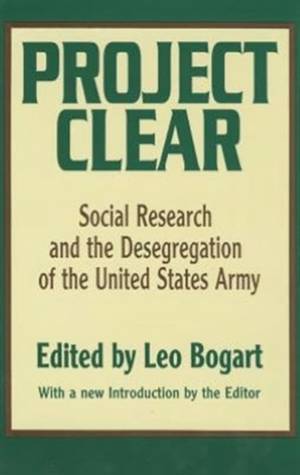
- Afhalen na 1 uur in een winkel met voorraad
- Gratis thuislevering in België vanaf € 30
- Ruim aanbod met 7 miljoen producten
- Afhalen na 1 uur in een winkel met voorraad
- Gratis thuislevering in België vanaf € 30
- Ruim aanbod met 7 miljoen producten
Zoeken
Project Clear
Social Research and the Desegregation of the United States Army
Leo Bogart
Hardcover | Engels
€ 143,95
+ 287 punten
Omschrijving
Clear was the code name for the research that led to the official desegregation of the U.S. Army at the time of the Korean War. This volume represents the two major troop opinion surveys that were the heart of the project, the first examining the performance of black troops in the Korean campaign, and the second, the problems encountered by black soldiers stationed in the continental United States. Although Project Clear dealt with a unique series of events and with a situation that existed for only a few transitional years, its findings were obvious: racial integration "worked." Recent years have witnessed renewed expression of racial tension and conflict. This study includes observations applicable to problems still unsolved and to situations yet to be encountered. Apart from such an intimation of future applicability, there is a drama to be found in the transformation of an institution as large and conservative as the army. For the social scientist, there is a particular interest in this example of how large-scale social research, conducted with tremendous speed and under great pressure, can be applied effectively to influence national policy.
Specificaties
Betrokkenen
- Auteur(s):
- Uitgeverij:
Inhoud
- Aantal bladzijden:
- 440
- Taal:
- Engels
Eigenschappen
- Productcode (EAN):
- 9780887384240
- Verschijningsdatum:
- 30/11/1991
- Uitvoering:
- Hardcover
- Formaat:
- Genaaid
- Afmetingen:
- 157 mm x 236 mm
- Gewicht:
- 725 g

Alleen bij Standaard Boekhandel
+ 287 punten op je klantenkaart van Standaard Boekhandel
Beoordelingen
We publiceren alleen reviews die voldoen aan de voorwaarden voor reviews. Bekijk onze voorwaarden voor reviews.











